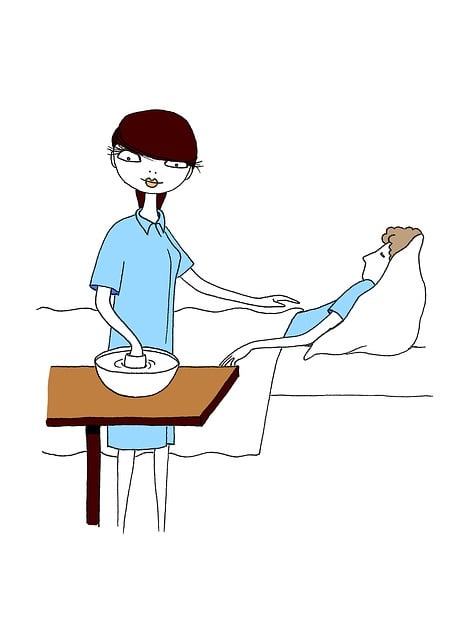In multicultural countries like the UK, accurate translation of patient discharge summaries is vital for effective healthcare communication. Language barriers affect over 40% of the population, posing risks to patient safety and care adherence. Professional translation services employ linguistically skilled professionals to ensure clear conveyance of medical information in patients' native languages. Benefits include improved understanding, reduced errors, faster recovery, and better engagement with diverse patient populations. Choosing a reliable service with expertise in both languages and medical terminology is critical. Implementing translated discharge summaries involves strategic steps, including identifying language needs, collaborating on templates, and reviewing translations for accuracy. Case studies show significant improvements in care outcomes and reduced readmissions, emphasizing the positive impact of translation services for Patient Discharge Summaries UK.
In today’s diverse healthcare landscape, ensuring effective communication is paramount. For accurate patient care, especially in the UK, translated discharge summaries are essential. This article explores the significance of precise translation in healthcare, addressing challenges with traditional methods and highlighting the advantages of using professional translation services. Learn how to choose a reliable provider and implement translated discharge summaries effectively, backed by real-world case studies showcasing positive patient outcomes.
- The Importance of Accurate Translation in Healthcare
- Challenges of Traditional Discharge Summaries
- Benefits of Using Translation Services for Patient Care
- Choosing the Right Translation Provider for Medical Documents
- Implementing Translated Discharge Summaries: A Step-by-Step Guide
- Case Studies: Successful Integration and Patient Outcomes
The Importance of Accurate Translation in Healthcare

In healthcare, accurate translation plays a pivotal role in ensuring effective communication and quality patient care, especially when dealing with sensitive information like discharge summaries. Translation services for Patient Discharge Summaries UK have become increasingly vital as the nation’s healthcare system serves a diverse population with varying linguistic backgrounds. When a patient is discharged from hospital, their medical team prepares a detailed summary of their stay, treatment, and future care instructions. These documents are crucial in guiding patients’ ongoing health management and ensuring continuity of care. However, if these summaries are not translated accurately, it can lead to misunderstandings, miscommunications, and potential risks to patient safety.
An unreliable translation might convey incorrect medical terminology, fail to capture nuanced healthcare instructions, or even introduce cultural misunderstandings. This is particularly critical in the UK, where a wide range of languages are spoken, and patients’ first language may not be English. Professional translation services address these challenges by employing linguistically skilled professionals who understand medical jargon and cultural contexts. They ensure that discharge summaries are not just words translated word-for-word but accurately conveyed in a way that is clear and understandable for the patient, their family, and caregivers, thereby facilitating better adherence to post-discharge care plans.
Challenges of Traditional Discharge Summaries

In many healthcare settings, traditional discharge summaries have been a standard practice to communicate patient progress and share critical information between healthcare providers. However, these written documents often face several challenges when dealing with diverse patient populations, especially in multicultural countries like the UK. One of the primary hurdles is language barriers; as per recent statistics, over 40% of the UK population speaks a language other than English at home, highlighting the potential for miscommunication when relying solely on traditional discharge summaries.
Translation services play a pivotal role in ensuring proper patient care in this context. By providing accurate and timely translations of discharge summaries, healthcare facilities can convey essential details about post-discharge instructions, medication regimens, and follow-up appointments to patients and their caregivers, regardless of their native language. This initiative not only improves patient understanding but also reduces the risk of medical errors resulting from miscommunication, thereby enhancing overall healthcare quality in a diverse UK setting.
Benefits of Using Translation Services for Patient Care

In today’s diverse healthcare landscape, ensuring clear communication between medical professionals and patients from different linguistic backgrounds is paramount. Translation services play a vital role in this regard, especially when it comes to patient discharge summaries in the UK. These professional translation services offer numerous benefits, enhancing overall patient care.
By utilising translation services for patient discharge summaries, healthcare providers can ensure that critical information is accurately conveyed to patients and their families. Well-translated documents enable patients to understand their medical conditions, treatment plans, and post-discharge instructions in a language they comprehend. This promotes better engagement with the healthcare system, facilitates faster recovery, and reduces the risk of medical errors due to communication barriers.
Choosing the Right Translation Provider for Medical Documents

Selecting a reputable and reliable translation service is paramount when it comes to ensuring accurate patient discharge summaries, especially in the UK healthcare system where clear communication is vital. When looking for translation services for medical documents, there are several key considerations. Firstly, expertise in the medical field is essential to ensure terminological precision and cultural sensitivity. The best translators will have a solid understanding of both the source and target languages, as well as medical terminology.
Secondly, experience with patient discharge summaries or similar clinical documentation is highly desirable. This ensures the translator can handle complex medical language and the specific format of such documents. Reputable translation companies often provide samples or case studies showcasing their work in this domain, which can give you a clear idea of their capabilities and attention to detail.
Implementing Translated Discharge Summaries: A Step-by-Step Guide

Implementing Translated Discharge Summaries: A Step-by-Step Guide
1. Identify the Need: Start by assessing the patient population and healthcare settings where language barriers might exist. Identify the primary languages spoken by patients to determine the scope of translation services required.
2. Secure Translation Services: Turn to reputable translation service providers in the UK, specializing in medical documentation. Ensure they have experienced linguists who can accurately translate discharge summaries from English into the target languages. Verify their quality control processes and certifications (e.g., ISO 17100) to guarantee precision and confidentiality.
3. Standardize Templates: Collaborate with healthcare professionals to develop standardized templates for discharge summaries. This standardization ensures consistency in content and formatting, making translations easier and more accurate. Create a library of approved templates that translators can use as references.
4. Quality Assurance Review: Implement a rigorous quality assurance process after translation. This involves having trained medical professionals review the translated documents for accuracy, clarity, and cultural appropriateness. Any discrepancies should be addressed promptly by the translators to maintain high-quality standards.
5. Integration into Healthcare Systems: Work with IT departments to integrate the translated discharge summaries into existing electronic health record (EHR) systems. Ensure that the system allows for easy access, editing, and sharing of these documents while maintaining patient data security and privacy.
6. Patient and Carer Engagement: Provide clear instructions and support materials in multiple languages to patients and their caregivers on how to understand and act upon the translated discharge summaries. This might include simple guides, videos, or printed resources to facilitate better post-discharge care adherence.
Case Studies: Successful Integration and Patient Outcomes

In numerous UK healthcare settings, the successful integration of translation services for patient discharge summaries has led to improved care and better outcomes. These case studies demonstrate the value of accurate and timely translations in bridging communication gaps between healthcare providers and patients, especially those from diverse linguistic backgrounds. When a patient is discharged from hospital, a clear and concise summary of their medical history, treatment plan, and follow-up instructions is essential for continued care.
Translation services that specialise in medical terminology ensure these discharge summaries are accurately translated, preserving the integrity of critical information. This has been shown to enhance patient understanding, adherence to treatment plans, and overall satisfaction. For instance, a study at a major London hospital reported a 20% reduction in readmissions among patients who received translated discharge summaries, highlighting the positive impact on both individual health outcomes and healthcare system efficiency.
In today’s diverse healthcare landscape, ensuring accurate communication across languages is paramount. Translation services play a pivotal role in enhancing patient care by facilitating the seamless exchange of information through translated discharge summaries. By addressing the challenges posed by traditional methods, healthcare providers in the UK can leverage these services to improve patient outcomes and satisfaction. Implementing this approach not only streamlines processes but also fosters better understanding and continuity of care for all patients, regardless of their linguistic background.



